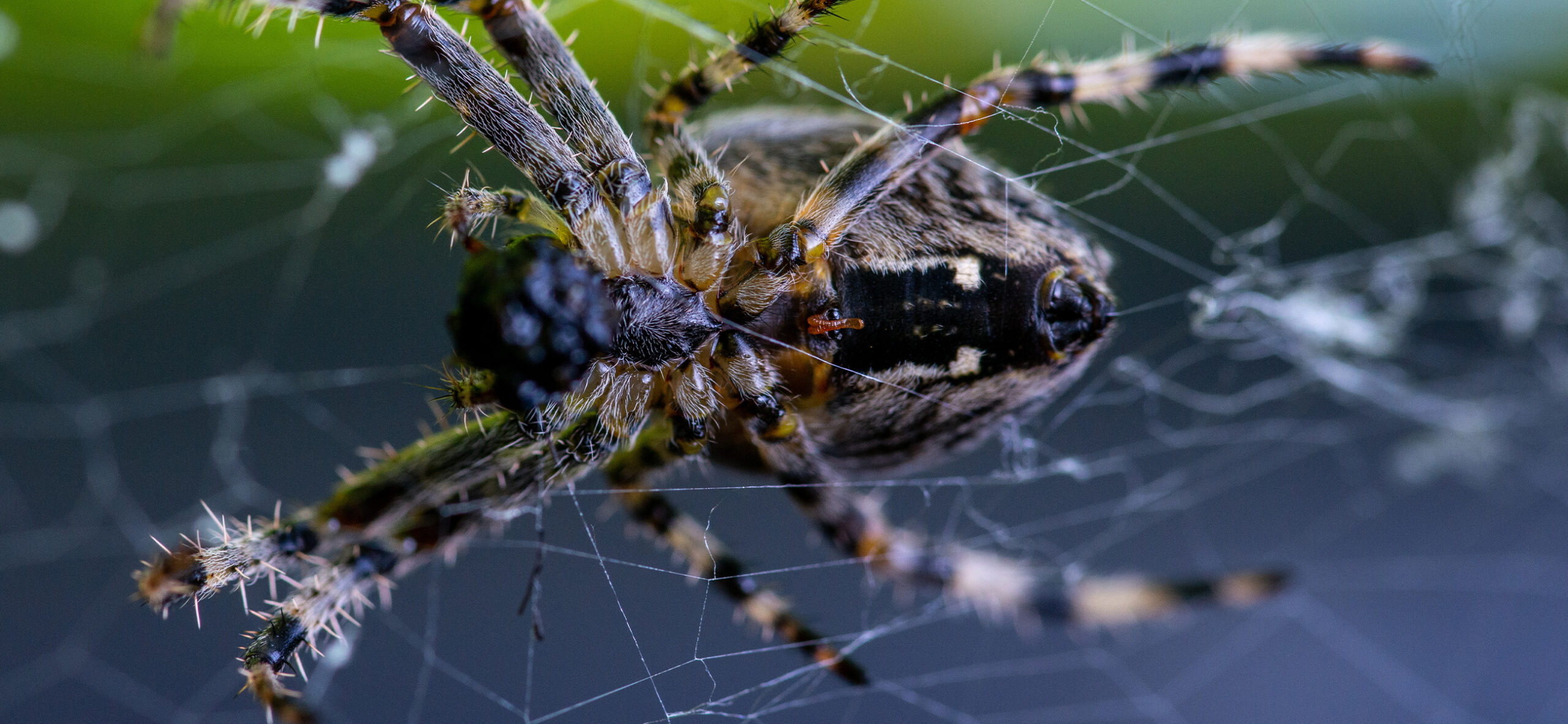Here is a simple guide to everything you need to know about spiders, and how to dispose of them easily and safely.
Arachnids, known as spiders, have a distinct body shape, with a narrowed abdomen and modified fangs that secrete poison. They also possess two or more pairs of spinnerets, which they use to create webs and cocoons for their eggs.
- Spiders have bodies divided into a cephalothorax and abdomen with eight joined legs.
- Palps function as sensory organs and serve males in reproduction.
- Upon moulting, spiders exit the exoskeleton by pulling the legs out.
- Female spiders are usually larger than males.
- There are seven types of spider glands to produce various silks (protein masses), but each spider species possess only a selection of glands.
- By weight, spider dragline silk is 5x stronger than steel, 30% more flexible than nylon, 2x as elastic, and can absorb 3x the impact force of Kevlar.
- Spider webs remain intact and undamaged despite exposure to microorganisms.
- To allow moving from strand to strand and not sticking to webs, spiders have specific tarsal claws.
- Spiders balloon by using strands of silk as a wing to ride on air currents.
- Ground dwelling spiders line burrows with silk.
- All spiders are predators.
- Spiders that hunt have thick tufts of hair called scapulae on the bottom of their legs, which provide them with a large number of points of contact and enable them to move about on smooth, vertical surfaces and ceilings.
- Spiders eat a weight of insects greater than the weight of the human population.
- Most female spiders do not consume the male post-copulation.
- Spiders consume by injecting a digestive fluid then suck up the fluid.
- In the U.S., only 60 spider species are capable of biting. Of these, four are capable of causing injury. These are the Black Widow, Brown Recluse, Hobo, and Yellow Sac spiders.
- Most spider fangs cannot penetrate human skin and are therefore harmless.
- Most spider bites result only in localized swelling and/or irritation.
- Spider problem or lighting problem? Change blue light fixtures to yellow (Hg vapor or blue light is 112x more attractive to insects than Na vapor or yellow light-fewer insects, fewer spiders).
- Eliminate woodpiles, trash, rocks, and clutter or debris fields along exterior structural grade and foundation areas.
- Maintain building positive pressure to push ballooning spiders out.
- Seal or caulk cracks, crevices, and gaps as well as check to be sure doors and windows are serviceable.
- Use pressure-washing systems as appropriate to eliminate heavy spider pressures.
- Sweep away spider webs using a brush.
- Manage interior excess moisture and relative humidify through vent and dehumidifier systems.
- Vacuum (HEPA filter) webbing, egg sacks, spiders, and dead insects (place bag in sealed container for disposal).
- Use appropriate glue traps to capture and monitor spider species and pressure.
- Use professional products to reduce and eliminate spider pressures. For web-constructing spiders, lightly dust the web as it may be recycled biologically.
- Always read, understand, and follow product label directions.
- Communication throughout the process of spider management is critical and will establish realistic expectations for your customers.





